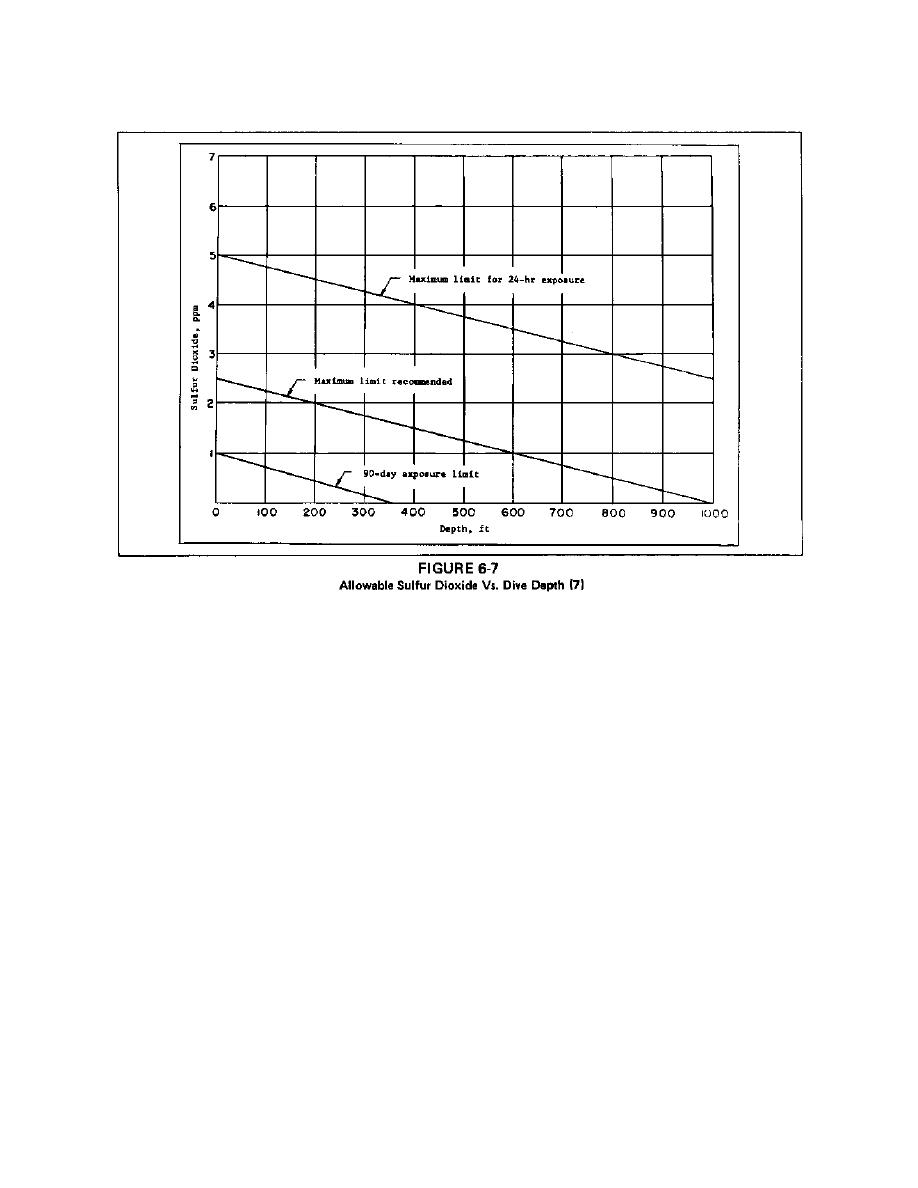
NOTE:
If a built-in breathing (BIB) system is employed,
high concentration of oxygen, or pure oxygen, is
breathed and the exhaled gas must be vented outside
the chamber.
Chamber supply gas requirements are a function of both breathing gas
requirements and supply system design, and are discussed in Sections 2 and 3.
Figure 6-8 relates oxygen consumption and respiratory volume to rate of
exertion. The data for Figure 6-8 are based on experimental measurements and
provide a basis for the selection of breathing-gas quantities. The mass rate
of oxygen consumption and corresponding carbon dioxide production varies with
the rate of exertion and is independent of depth. As indicated in Figure
6-8, values of oxygen consumption vary from about 0.5 standard liters per
minute (slm) when at rest to about 4.0 slm with heavy exertion. These
values are equivalent to 0.0895 and 0.716 pound of oxygen per hour, or 1.14
and 9.13 standard cubic feet (scf) per hour. The actual volume of oxygen
consumed at depth would decrease in inverse proportion to absolute pressure
in accordance with gas laws. The values for respiratory minute volume (RMV)
shown in Figure 6-8 are determined by carbon dioxide ventilation requirements
within the body, and these volumes are the same at diving depths. Thus, the
mass flow of gas to meet respiratory ventilation requirements increases in
direct proportion with depth and with oxygen consumption. (See Reference
(9), Riegel, Design of Breathing Apparatus for Diving to Great Depths.)


 Previous Page
Previous Page
